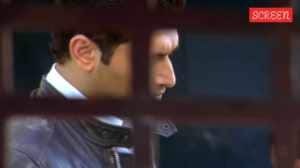THE MANY CHARMS OF KOREGAON PARK
The blast at German Bakery shattered the peace of Koregaon Park,Punes upscale neighbourhood thats home to the Osho Commune and to the citys elite. The Sunday Express takes a stroll in this tony pocket of the city....
Ask anyone for directions to Koregaon Park,or KP as its popularly called now,and you will be told to turn into the road sandwiched between two petrol pumps,past Taj Hotel. This is North Main Road,the arterial road of the citys most elite and popular neighbourhood,Koregaon Park.
Ma Amrit Sadhna of the Osho Commune remembers the time when two majestic banyan trees on either side of the road,and not the two petrol pumps,were Koregaons landmarks. I miss their presence every time I take this road, says the sanyasin who is also a member of the Communes management committee.
The change at the entrance is perhaps symbolic of the transformation that Koregaon has undergone over the years,turning the tranquil,green and peaceful area into one bustling with shops,tourists and eateries.
Everyone asks me why Osho came to Pune and why he chose Koregaon Park to establish his commune. The answer to the first question is: nobody knows. It is a mystery. And the answer to the second question is that it was chance. His disciples were looking for a spacious bungalow where he could stay and where people could come to meditate. Way back in 1974,Koregaon Park really looked like a park. With sprawling mansions,big gardens and quiet streets lined with huge banyan trees carrying the wisdom of the centuries within their solid trunks,it appeared to be the right setting for meditation, says Sadhna.
Over the years,the Osho Commune has shaped the identity of the area,as have the palatial bungalows spread over the lanes that lie between the bustling North Main Road and the much quieter South Main Road. The roads run parallel to each other,with the residential lanes in between. Occupied by the citys most affluent and well-known familiesWeikfields Malhotras,Naushad Forbes of Forbes Marshall,stud farm owner Zavaray Poonawalla and retired Air Chief Marshal Hrushikesh Moolgavkarthese homes,set in acres of open land,have an
old-world charm about them. There are also bungalows that are said to be frequented by their owners when they need to get away from the rest of the worldsome of them are owned by Indias royal families and one belongs to Indias most reclusive tycoon,Pallonji S Mistry.
Though Koregaon residents today complain about shrinking open areas,fewer trees and rapid commercialisation,the indisputable fact is that KP was,and has remained,the most sought-after residential address in Pune. The main road may have succumbed to urbanisation and commercialisation,but the inner lanes are still leafy and huge banyan trees,with roots plunging to the ground,lend the neighbourhood a majestic air. This is especially true of the first four lanes that are governed by the Collectors Lease of 1930which puts a restriction on high-rise buildings coming upinstead of the municipal corporation rules. The rule also lays down the built-up area vis-à-vis the open space around it,which accounts for the huge land that owners have to keep vacant on their plots, says Ravi Verma,president of the National Association of Realtors. Thanks to the stringently implemented rule,the four lanes have remained only-bungalow areas even as the other lanes are punctuated with high-rise residences and commercial establishments.
I remember the peace that would descend on me every time I would turn into KP, says Monica Trivedi,a well-known socialite-cum-activist of the city who has been living in the area for the past 20 years. Trivedi lives in one of the lanes where high-rises are prohibited. Though Koregaon Park has gone through a metamorphosis since we first moved here,its still a wonderful neighbourhood to live in. In those days,it was a quiet locality,almost tranquil. You could see orange-robed figures walking around and they would,once in a while,rake up a controversy due to their bohemian attitude and behaviour. But apart from these outbursts,Koregaon Park was a haven. I would take my children to Lane Five and beyond for a drive in the countryside. Those days,North Main Road had only a few establishments,most notably German Bakery. Thanks to the Rajneesh Ashram,we had a number of foreigners in the area and German Bakery was a place where I could get bread,cheese and an assortment of food, says Trivedi,understandably as devastated as the rest of KPs residents after last weeks blast at German Bakery,an event that blew into splinters the areas carefully nurtured reputation of an abode of peace and tranquility.
Sadhna would like to believe that the vicissitudes in Oshos own controversial life had a direct bearing on the fluctuations that KP saw in the 80s. The profusion of orange on the gulmohar trees was matched by the orange-coloured robes of sanyasins roaming these lanes in the seventies. When Osho moved from Koregaon Park to Oregon,US,in the early eighties,the area began to look desolate. Then,when he returned to Pune in January 1987,with him came a flood of international visitors. With so many guests to cater to,restaurants and shops mushroomed quickly in the area. Tibetan and Kashmiri traders soon set up their colourful shops,selling knickknacks to foreign visitors. Hotels and apartments came up next. Soon,the green fields around disappeared like a morning dream, says Sadhna.
But its only in the last decade that commercialisation has picked up a dizzying momentum. Restaurants,boutiques,ayurvedic massage centres,hair and nail parlours and a host of curio and gemstone shops came up rapidly in response to the inflow of foreign visitors and the enhanced spending power of the citys own residents. Koregaon Park changed irrevocably from a quiet sleepy locality to one frequented by everyone,from shoppers looking for brands to youngsters wanting to sample the charm of a place dotted with an eclectic mix of food joints.
I call it a food village now. With about 60 to 70 restaurants in the area,what else can you call it, says Sohrab Chinoy,owner of ABC Farms and the pioneer of the food culture that KP is known for today. He started Sangamitra,a Continental eatery,in 1994 primarily so he could serve a variety of cheese. The two-and-a-half acres of his farm today house the very popular Shisha Café,known for its live music and tree-house concept,Hyderabadi restaurant Golconda,coffee shop Aromas and the Swiss Cheese Garden. Earlier,it was known for its Jazz Garden that was responsible for bringing that genre of music to the city. I guess people took to our USP of open-air eateries and the fare we served. Today,of course,the concept has exploded in the locality, says Chinoy.
Along with oldies like Prems and German Bakery,Koregaon Park today boasts of some of the best restaurants in the city,like Arthurs Theme,Malakka Spice,The Great Punjab,Squisitto,Koyla,Yellow Chillies and Mad House Grill. Add to that the newly-opened O Hotel with its Sushi bar and The Westin,and the fine-dining experience is complete. For youngsters looking for a quick and more pocket-friendly bite,theres Sweet Chariot,Subway,Burger King and Mocha.
Its not just the food but the ambience that we like. Watching the maroon-robed foreigners and the vendors selling Osho chappals and colourful gemstones,theres a different feel to the place. Its also the most cosmopolitan area I know in the city, says Chirag Mahtani,a first-year student of engineering and a regular at KP.
Jaan Mohammad,whose family has had a semi-precious stone business in the area for a decade,agrees. Business has gone down from the time we started but I cannot think of going anywhere else. Just the way Kashmir feels like home,so does Koregaon Park, says the 27-year-old.
While KP is known to be the abode of the rich,it also houses some of the most well-known charitable organisations,like the Poona Blind School near German Bakery and the Bharatiya Samaj Seva Kendra,one of the most reputed orphanages of Pune.
The neighbourhood also hosts Chabad House,the Jewish centre thats currently in news for being on the radar of terrorists. We have lived in this area for 10 years now and have always felt at home, says Rachel Kupchek,wife of Rabbi Bztalel Rupchek.
The presence of foreigners and the neighbourhoods cosmopolitan nature are also responsible for the little quirks one still witnesses in the areasuch as STD booths that accept Visa and Mastercard.
The influx of foreigners has added another unexpected twist to the demographics of the areaa number of doctors have set up practice here. Its an open secret in Pune that most foreign visitors have medical treatment (especially the dental kind) on their mind,almost as much as a spiritual pursuit,when they land in Pune. I do have a lot of foreign patients and thats a big advantage of practising in Koregaon Park, says general practitioner Z.S. Anwar,who shifted here from Muscat 10 years ago.
But will the blast in Koregaon change this easy and casual ambience that hangs over the neighbourhood? Few think so. If Honaji Sanas,a developer who shifted to the area some 15 years ago,thinks that Koregaon Parks positive energy,vibrancy and colourful populace will remain unaffected,Chinoy says life is back to normal already. In dealing with situations like these,we are like the people of Mumbaiour spirit is indefatigable, says Chinoy.
Verma,too,is convinced that the blast is not going to affect the property rates in KP,among the highest in the citya bungalow here recently sold for about Rs 30 crore.
And for most residents,the peace of their neighbourhood can be disturbed but it will never go. Trivedi says,The essence of Koregaon Park remains what it has always been. No matter how much it has changed or continues to change,Koregaon Park is a place I cherish. It is my home.
Photos





- 01
- 02
- 03
- 04
- 05


























